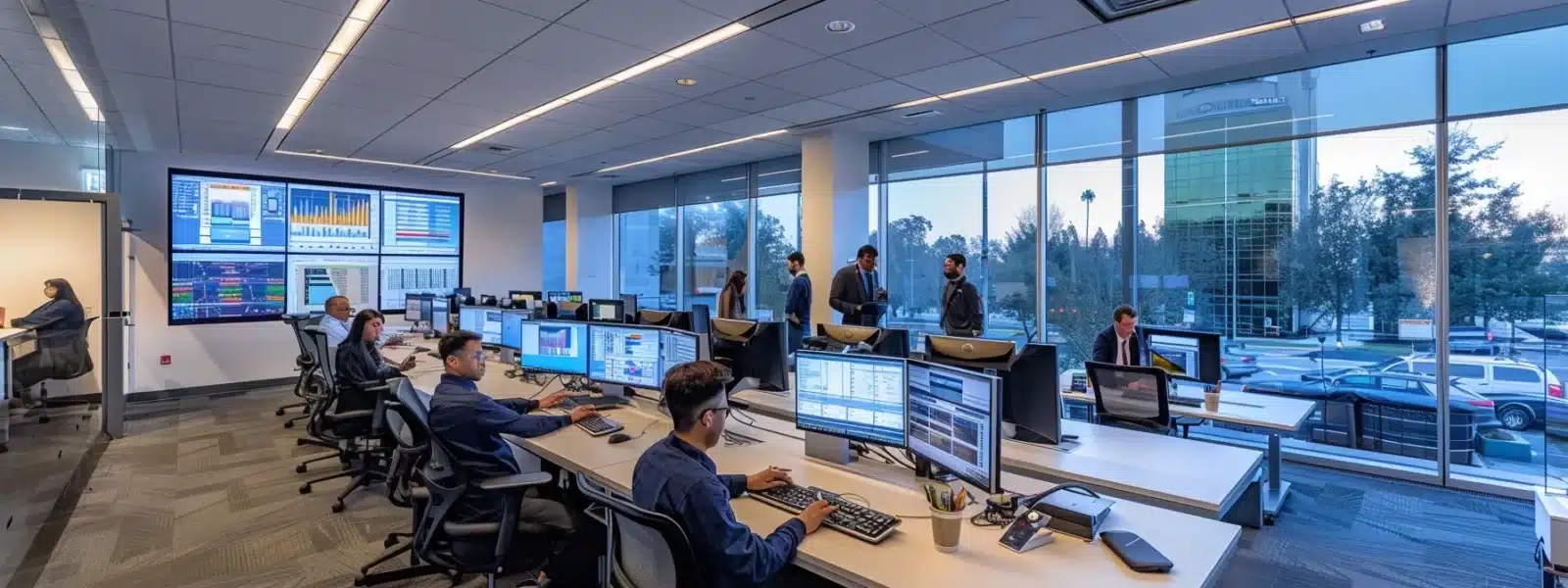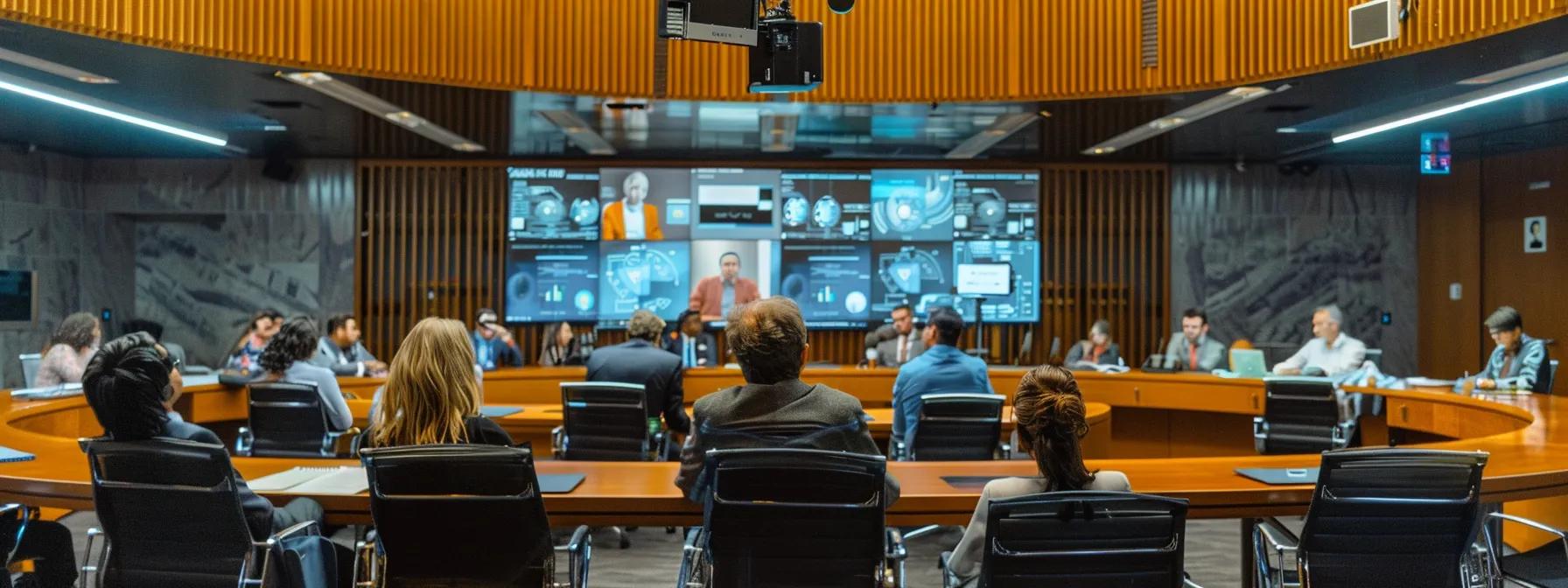Achieving CMMC compliance is essential for businesses handling controlled unclassified information, especially those seeking contracts with the Defense Contract Management Agency. This guide will outline the CMMC framework, key milestones in the compliance timeline, and strategies for developing a robust plan for certification. By engaging with this content, readers will gain insights into overcoming common challenges and sustaining compliance after certification, ultimately ensuring their organization is well-prepared for the complexities of the supply chain. This resource aims to alleviate the confusion surrounding CMMC consulting and provide a clear path to successful certification.
Key Takeaways
- CMMC certification is essential for organizations handling Controlled Unclassified Information in the defense supply chain
- Understanding the five CMMC levels helps organizations assess their cybersecurity maturity and compliance needs
- Regular training and employee engagement are crucial for maintaining compliance with CMMC standards
- Continuous monitoring and proactive risk management enhance an organization‘s cybersecurity posture post-certification
- Leveraging CMMC compliance can open new business opportunities and strengthen market positioning
Understanding the CMMC Framework

The CMMC framework has evolved to enhance risk management within the defense supply chain, aiming to protect sensitive information. This section will cover the various CMMC levels and their specific requirements, as well as identify which organizations must comply with cmmc consulting CMMC standards to secure contracts under federal law. Understanding these elements is crucial for achieving CMMC certification.
The Evolution of CMMC and Its Objectives
The Cybersecurity Maturity Model Certification (CMMC) was developed to address the increasing need for robust cybersecurity measures within the defense supply chain. Its evolution reflects a growing recognition of the importance of protecting sensitive information, particularly as cyber threats become more sophisticated. The CMMC framework establishes a structured approach to governance, ensuring that all organizations, including subcontractors, adhere to specific cybersecurity practices to safeguard their assets.
Initially introduced in 2019, the CMMC framework has undergone several revisions to enhance clarity and effectiveness. Each level of CMMC represents a different degree of cybersecurity maturity, with specific requirements outlined in the CMMC compliance checklist. This tiered approach allows organizations to assess their current cybersecurity posture and implement necessary improvements, ultimately leading to certification and eligibility for federal contracts.
As organizations navigate the CMMC landscape, understanding the objectives behind the framework is essential. The primary goal is to create a unified standard that not only protects sensitive data but also fosters a culture of cybersecurity awareness across the defense industry. By prioritizing CMMC compliance, businesses can better manage risks, enhance their cybersecurity practices, and position themselves as trustworthy partners in the defense supply chain.
CMMC Levels and Their Requirements
The CMMC framework consists of five distinct levels, each with specific requirements that organizations must meet to achieve regulatory compliance. These levels range from basic cybersecurity hygiene at Level 1 to advanced security measures at Level 5. Each level builds upon the previous one, requiring organizations to conduct thorough risk assessments and implement appropriate controls to protect sensitive information.
Organizations seeking CMMC certification must prepare for audits that evaluate their adherence to the requirements outlined in the Code of Federal Regulations. The audit process is critical, as it verifies that the organization has implemented the necessary practices to safeguard Controlled Unclassified Information (CUI). Understanding the federal acquisition regulation is essential, as it dictates the compliance standards that contractors must meet to secure federal contracts.
To successfully navigate the CMMC levels, organizations should develop a structured plan that includes regular assessments and updates to their cybersecurity practices. This proactive approach not only ensures compliance but also enhances overall security posture. By prioritizing CMMC requirements, businesses can position themselves as reliable partners in the defense supply chain, ultimately leading to increased opportunities for federal contracts:
- Understand the five CMMC levels and their specific requirements.
- Conduct regular risk assessments to identify vulnerabilities.
- Prepare for audits to demonstrate compliance with the Code of Federal Regulations.
- Align practices with federal acquisition regulations to secure contracts.
- Implement a structured plan for ongoing cybersecurity improvements.
Identifying Who Must Comply With CMMC Standards
Organizations that handle Controlled Unclassified Information (CUI) within the defense supply chain are required to comply with CMMC standards. This includes prime contractors and subcontractors who provide goods and services to the Department of Defense (DoD). Understanding the jurisdiction of CMMC compliance is essential, as it determines which entities must undergo the certification process to secure federal contracts.
The Office of Information and Regulatory Affairs (OIRA) plays a significant role in overseeing compliance with CMMC standards. Organizations must be aware of their obligations under federal regulations, as failure to comply can lead to vulnerabilities that jeopardize sensitive information. By aligning their cybersecurity practices with CMMC requirements, organizations can mitigate risks and enhance their overall security posture.
In addition to defense contractors, any organization that interacts with the DoD or handles sensitive data may be subject to CMMC compliance. This broad scope emphasizes the importance of understanding the specific requirements for certification. Organizations should assess their current cybersecurity measures and develop a strategic plan to address any gaps, ensuring they meet the necessary standards for CMMC certification.
Key Milestones in the CMMC Compliance Timeline

Understanding the key milestones in the CMMC compliance timeline is essential for defense contractors. Important dates and deadlines will directly impact business operations, requiring timely adjustments to meet the standards set by the United States Department of Defense. Additionally, anticipated changes and updates in the CMMC program will shape future compliance strategies, emphasizing the need for alignment with information security frameworks like FedRAMP and the National Institute of Standards and Technology. This section will outline these critical elements, providing practical insights for organizations preparing for their CMMC assessment.
Important Dates and Deadlines for Defense Contractors
Defense contractors must be aware of the CMMC final rule, which outlines critical deadlines for compliance. The regulation mandates that organizations handling Controlled Unclassified Information (CUI) must achieve certification by specific dates to secure federal contracts. Staying informed about these timelines is essential for effective planning and resource allocation, ensuring that businesses can meet the necessary requirements without disruption.
As part of the compliance process, contractors should utilize the eMASS platform to track their progress and document their cybersecurity practices. This tool facilitates corporate transparency by allowing organizations to maintain clear records of their compliance efforts. By leveraging managed security service providers, businesses can enhance their cybersecurity posture and streamline their path to certification, ultimately reducing the risk of non-compliance.
In addition to understanding the CMMC compliance timeline, contractors should regularly review updates from the Department of Defense regarding any changes to the regulation. These updates may impact existing deadlines and requirements, making it crucial for organizations to remain agile in their compliance strategies. By proactively addressing these changes, defense contractors can better position themselves for successful certification and continued eligibility for federal contracts.
How the Timeline Affects Your Business Operations
The CMMC compliance timeline significantly impacts business operations, as organizations must align their cybersecurity practices with specific deadlines to maintain eligibility for federal contracts. Failure to meet these deadlines can result in lost opportunities and potential financial setbacks. Therefore, businesses must prioritize their compliance efforts to ensure they are prepared for audits and can demonstrate adherence to the required standards.
As organizations navigate the CMMC timeline, they must allocate resources effectively to address compliance requirements. This includes investing in cybersecurity training, technology upgrades, and risk assessments. By proactively managing these elements, businesses can enhance their security posture and reduce the likelihood of disruptions that could arise from non-compliance.
Moreover, the evolving nature of CMMC regulations necessitates that organizations remain agile in their operations. Regularly reviewing updates from the Department of Defense and adjusting compliance strategies accordingly is essential. This adaptability not only helps businesses stay on track with certification but also fosters a culture of continuous improvement in cybersecurity practices, ultimately benefiting their overall operational efficiency.
Anticipated Changes and Updates in the CMMC Program
As the CMMC program continues to evolve, organizations must stay informed about anticipated changes that may impact their compliance strategies. The Department of Defense (DoD) has indicated that updates to the CMMC framework will focus on refining the certification process and enhancing clarity around requirements. This ongoing evolution aims to ensure that the framework remains relevant in addressing emerging cybersecurity threats while providing a clear path for organizations seeking certification.
One significant area of change may involve the integration of additional cybersecurity standards and best practices into the CMMC framework. Organizations should prepare for potential updates that align CMMC with other established frameworks, such as NIST SP 800-171 and FedRAMP. By understanding these anticipated changes, businesses can proactively adjust their cybersecurity measures and ensure they meet the evolving compliance landscape.
Furthermore, organizations should anticipate adjustments in the timeline for certification and compliance deadlines. The DoD may revise these timelines based on industry feedback and the overall effectiveness of the CMMC program. Staying engaged with updates from the DoD will enable organizations to adapt their planning and resource allocation, ensuring they remain on track for successful certification and continued eligibility for federal contracts.
Developing a Strategic Plan for CMMC Certification

Assessing the current cybersecurity posture is the first step in developing a strategic plan for CMMC certification. Organizations must set clear compliance goals and objectives, allocate necessary resources for implementation, and create a realistic timeline for their compliance efforts. Each of these elements is crucial for ensuring a structured approach to achieving CMMC certification and maintaining eligibility for federal contracts.
Assessing Your Current Cybersecurity Posture
Assessing the current cybersecurity posture is a critical first step for organizations aiming for CMMC certification. This assessment involves a comprehensive review of existing security measures, policies, and practices to identify vulnerabilities and gaps in compliance with CMMC requirements. By understanding their current state, organizations can prioritize areas that need improvement, ensuring they are well-prepared for the certification process.
Organizations should conduct a thorough risk assessment to evaluate their cybersecurity controls and practices. This includes examining how sensitive data is handled, stored, and protected, particularly Controlled Unclassified Information (CUI). By identifying weaknesses in their cybersecurity framework, businesses can develop targeted strategies to enhance their security posture and align with CMMC standards.
To facilitate this assessment, organizations can utilize various tools and frameworks that provide insights into their cybersecurity effectiveness. Regular audits and assessments not only help in identifying compliance gaps but also foster a culture of continuous improvement. By establishing a clear understanding of their cybersecurity posture, organizations can create a structured plan that addresses deficiencies and positions them for successful CMMC certification:
| Assessment Area | Key Focus | Action Steps |
|---|---|---|
| Data Protection | Handling of CUI | Review data storage and access controls |
| Risk Management | Identifying vulnerabilities | Conduct regular risk assessments |
| Compliance Readiness | Alignment with CMMC | Implement necessary cybersecurity practices |
Setting Clear Compliance Goals and Objectives
Setting clear compliance goals and objectives is essential for organizations pursuing CMMC certification. These goals should be specific, measurable, achievable, relevant, and time-bound (SMART), allowing businesses to track their progress effectively. By establishing clear objectives, organizations can focus their efforts on the critical areas that require improvement, ensuring they meet the necessary CMMC standards.
Organizations should prioritize their compliance goals based on their current cybersecurity posture and the specific requirements of the CMMC framework. For instance, if a company identifies gaps in its data protection measures, it should set a goal to enhance its data handling practices within a defined timeframe. This targeted approach not only streamlines the compliance process but also helps organizations allocate resources efficiently to address their most pressing vulnerabilities.
Regularly reviewing and adjusting compliance goals is vital as organizations progress toward certification. As new challenges and updates in the CMMC framework arise, businesses must remain flexible and responsive to these changes. By fostering a culture of continuous improvement and aligning their objectives with evolving compliance requirements, organizations can enhance their cybersecurity posture and maintain eligibility for federal contracts:
| Goal Area | Objective | Action Steps |
|---|---|---|
| Data Protection | Enhance data handling practices | Implement access controls and encryption |
| Risk Management | Identify and mitigate vulnerabilities | Conduct regular risk assessments |
| Compliance Readiness | Align with CMMC standards | Review and update cybersecurity policies |
Allocating Resources for Implementation
Allocating resources effectively is a critical component of developing a strategic plan for CMMC certification. Organizations must assess their current capabilities and identify gaps that need to be addressed to meet the CMMC requirements. This may involve investing in cybersecurity tools, hiring skilled personnel, or engaging managed service providers to enhance their security posture and ensure compliance.
In addition to financial resources, organizations should consider the time and effort required for implementation. Establishing a realistic timeline for achieving compliance is essential, as it allows businesses to allocate human resources appropriately and avoid last-minute scrambles. By breaking down the certification process into manageable phases, organizations can ensure that each aspect of their cybersecurity practices is thoroughly addressed.
Furthermore, ongoing training and development for staff play a vital role in maintaining compliance with CMMC standards. Organizations should allocate resources for regular training sessions to keep employees informed about the latest cybersecurity practices and compliance requirements. This investment not only enhances the overall security culture within the organization but also prepares the workforce to effectively manage and protect Controlled Unclassified Information (CUI).
Creating a Realistic Timeline for Compliance Efforts
Creating a realistic timeline for CMMC compliance efforts is essential for organizations aiming to achieve certification. This timeline should account for the various stages of preparation, including risk assessments, policy updates, and employee training. By establishing clear deadlines for each phase, organizations can ensure they remain on track and allocate resources effectively throughout the compliance process.
Organizations should consider the complexity of their current cybersecurity posture when developing their timeline. For instance, those with existing gaps in their security measures may require additional time to implement necessary changes and conduct thorough audits. By realistically assessing their starting point, businesses can create a timeline that reflects their unique needs and challenges, ultimately leading to a smoother path toward CMMC certification.
Regularly reviewing and adjusting the compliance timeline is also crucial as organizations progress. As new updates from the Department of Defense emerge, businesses may need to adapt their plans to align with evolving requirements. This flexibility not only helps maintain compliance but also fosters a proactive approach to cybersecurity, ensuring that organizations are well-prepared for audits and can effectively protect Controlled Unclassified Information (CUI).
Preparing Your Organization for the CMMC Assessment

Preparing for the CMMC assessment involves several critical steps to ensure compliance and readiness. Organizations must focus on training employees on CMMC requirements, implementing necessary security controls and practices, and documenting policies, procedures, and processes. Additionally, conducting internal audits to identify gaps and collaborating with certified third-party assessors will enhance the overall compliance strategy, positioning businesses for successful certification.
Training Employees on CMMC Requirements
Training employees on CMMC requirements is a fundamental step in preparing for the CMMC assessment. Organizations must ensure that all staff members understand the importance of cybersecurity practices and their specific roles in maintaining compliance. This training should cover the key elements of the CMMC framework, including the handling of Controlled Unclassified Information (CUI) and the implementation of security controls.
Effective training programs should incorporate practical examples and scenarios that employees may encounter in their daily operations. By simulating real-world situations, organizations can help staff recognize potential security threats and understand the appropriate responses. This hands-on approach not only enhances learning but also fosters a culture of accountability and vigilance regarding cybersecurity practices.
Regular training sessions should be scheduled to keep employees updated on any changes to CMMC requirements and best practices. Organizations can benefit from utilizing various training resources, such as workshops, online courses, and expert-led seminars. By investing in ongoing education, businesses can ensure that their workforce remains informed and prepared, ultimately strengthening their overall compliance strategy and readiness for the CMMC assessment.
Implementing Necessary Security Controls and Practices
Implementing necessary security controls and practices is a critical step for organizations preparing for the CMMC assessment. This involves establishing robust measures to protect Controlled Unclassified Information (CUI) and ensuring compliance with the specific requirements outlined in the CMMC framework. Organizations should focus on integrating security controls that address both technical and administrative aspects, such as access management, data encryption, and incident response protocols.
To effectively implement these security controls, organizations must conduct a thorough evaluation of their existing cybersecurity practices. This assessment helps identify gaps and vulnerabilities that need to be addressed to meet CMMC standards. By prioritizing the implementation of necessary controls, businesses can enhance their overall security posture and demonstrate their commitment to safeguarding sensitive information during the CMMC assessment.
Additionally, organizations should foster a culture of cybersecurity awareness among employees to support the implementation of security practices. Regular training sessions can equip staff with the knowledge and skills needed to recognize potential threats and respond appropriately. By engaging employees in the process, organizations not only strengthen their security measures but also create a more resilient environment that is better prepared for the challenges of CMMC compliance.
Documenting Policies, Procedures, and Processes
Documenting policies, procedures, and processes is a fundamental aspect of preparing for the CMMC assessment. Organizations must create comprehensive documentation that outlines their cybersecurity practices, particularly those related to the handling of Controlled Unclassified Information (CUI). This documentation serves as a reference point for employees and auditors, ensuring that everyone understands their roles and responsibilities in maintaining compliance.
Effective documentation should include clear procedures for data protection, incident response, and risk management. By establishing standardized processes, organizations can ensure consistency in their cybersecurity practices, which is essential for meeting CMMC requirements. Regularly reviewing and updating these documents will help organizations stay aligned with evolving compliance standards and enhance their overall security posture.
Additionally, organizations should consider utilizing templates and frameworks that align with CMMC standards to streamline the documentation process. This approach not only saves time but also ensures that all necessary elements are covered. By prioritizing thorough documentation, businesses can demonstrate their commitment to cybersecurity and readiness for the CMMC assessment:
| Documentation Area | Key Focus | Action Steps |
|---|---|---|
| Data Protection | Handling of CUI | Establish clear data handling procedures |
| Incident Response | Managing security incidents | Document response protocols and roles |
| Risk Management | Identifying and mitigating risks | Outline risk assessment processes |
Conducting Internal Audits to Identify Gaps
Conducting internal audits is a vital step for organizations preparing for the CMMC assessment. These audits help identify gaps in current cybersecurity practices and ensure compliance with the CMMC framework. By systematically reviewing existing policies and procedures, organizations can pinpoint areas that require improvement, ultimately enhancing their readiness for certification.
During the internal audit process, organizations should focus on evaluating their handling of Controlled Unclassified Information (CUI) and the effectiveness of their security controls. This evaluation allows businesses to assess whether their current measures align with CMMC requirements. By addressing identified weaknesses, organizations can implement targeted strategies to bolster their cybersecurity posture and demonstrate compliance during the official assessment.
Furthermore, regular internal audits foster a culture of continuous improvement within the organization. By engaging employees in the audit process, businesses can raise awareness about cybersecurity practices and the importance of compliance. This proactive approach not only prepares organizations for the CMMC assessment but also strengthens their overall security framework, ensuring they are well-equipped to protect sensitive information in the long term.
Collaborating With Certified Third-Party Assessors
Collaborating with certified third-party assessors is a strategic move for organizations preparing for the CMMC assessment. These assessors bring specialized knowledge and experience in navigating the complexities of the CMMC framework, ensuring that businesses are well-prepared for the certification process. By leveraging their expertise, organizations can identify compliance gaps and implement necessary improvements more efficiently.
Engaging with certified assessors allows organizations to benefit from an objective evaluation of their cybersecurity practices. This external perspective can uncover vulnerabilities that internal teams may overlook, providing a comprehensive understanding of the organization‘s readiness for CMMC certification. Additionally, assessors can offer tailored recommendations that align with the specific requirements of the CMMC framework, enhancing the overall compliance strategy.
Furthermore, collaborating with third-party assessors can streamline the certification process, reducing the time and resources needed for preparation. Their familiarity with the audit process and requirements can help organizations avoid common pitfalls, ensuring a smoother path to certification. By investing in this collaboration, businesses position themselves as proactive partners in the defense supply chain, ultimately increasing their chances of securing federal contracts.
Overcoming Common Challenges in CMMC Compliance

Organizations face several challenges in achieving CMMC compliance, including addressing technical and operational hurdles, managing compliance costs effectively, and ensuring employee engagement and participation. Additionally, keeping up with regulatory changes and updates is crucial for maintaining compliance. This section will provide practical insights into overcoming these obstacles, helping businesses navigate their path to successful CMMC certification.
Addressing Technical and Operational Hurdles
Addressing technical and operational hurdles is essential for organizations striving for CMMC compliance. Many businesses encounter challenges related to outdated technology and insufficient cybersecurity measures, which can hinder their ability to meet the stringent requirements of the CMMC framework. By conducting a thorough assessment of existing systems and identifying areas that require upgrades, organizations can create a roadmap for implementing necessary changes that align with CMMC standards.
Operational hurdles often stem from a lack of employee training and awareness regarding cybersecurity practices. Organizations must prioritize training programs that educate staff on the importance of protecting Controlled Unclassified Information (CUI) and adhering to CMMC requirements. By fostering a culture of cybersecurity awareness, businesses can enhance their overall compliance efforts and ensure that all employees understand their roles in maintaining security protocols.
Additionally, organizations should consider leveraging managed service providers (MSPs) to navigate the complexities of CMMC compliance. These experts can offer tailored solutions that address specific technical challenges, streamline processes, and provide ongoing support throughout the certification journey. By collaborating with MSPs, businesses can effectively manage their compliance efforts, reduce operational burdens, and position themselves as reliable partners in the defense supply chain.
Managing Compliance Costs Effectively
Managing compliance costs effectively is a critical aspect for organizations pursuing CMMC certification. Businesses must conduct a thorough cost analysis to identify all potential expenses associated with achieving compliance, including technology upgrades, employee training, and third-party assessments. By understanding these costs upfront, organizations can allocate their budgets more efficiently and avoid unexpected financial burdens during the certification process.
Organizations can also explore cost-effective solutions by leveraging managed service providers (MSPs) that specialize in CMMC compliance. These providers can offer tailored services that address specific compliance needs, often at a lower cost than maintaining an in-house team. By partnering with an MSP, businesses can streamline their compliance efforts, reduce operational costs, and ensure they meet the necessary standards without overspending.
Additionally, organizations should prioritize their compliance initiatives based on risk assessments and the specific requirements of the CMMC framework. This targeted approach allows businesses to focus their resources on the most critical areas, ensuring that they achieve compliance in a cost-effective manner. By implementing a structured plan that outlines key compliance milestones, organizations can manage their costs while progressing toward successful CMMC certification:
- Conduct a thorough cost analysis for compliance efforts.
- Leverage managed service providers for cost-effective solutions.
- Prioritize compliance initiatives based on risk assessments.
- Implement a structured plan to manage compliance milestones.
Ensuring Employee Engagement and Participation
Ensuring employee engagement and participation is vital for organizations striving for CMMC compliance. Employees must understand their roles in maintaining cybersecurity practices, particularly in handling Controlled Unclassified Information (CUI). By fostering a culture of accountability, organizations can enhance their overall compliance efforts and ensure that all staff members are actively contributing to the security posture.
Effective training programs play a crucial role in engaging employees with CMMC requirements. Organizations should implement regular training sessions that cover the key elements of the CMMC framework, including security controls and incident response protocols. By providing practical examples and real-world scenarios, employees can better grasp the importance of their responsibilities, leading to increased vigilance and adherence to compliance standards.
Additionally, organizations can encourage participation by involving employees in the compliance process. Soliciting feedback and input from staff can help identify potential gaps in cybersecurity practices and foster a sense of ownership over compliance initiatives. This collaborative approach not only strengthens the organization’s security measures but also empowers employees to take an active role in protecting sensitive information, ultimately supporting the path to successful CMMC certification.
Keeping Up With Regulatory Changes and Updates
Organizations must remain vigilant in monitoring regulatory changes related to CMMC compliance to ensure they meet evolving standards. The Department of Defense frequently updates its guidelines, and staying informed about these changes is essential for maintaining eligibility for federal contracts. By subscribing to official communications and industry newsletters, businesses can receive timely updates that impact their compliance strategies.
Engaging with industry forums and professional networks can also provide valuable insights into upcoming regulatory changes. These platforms often facilitate discussions among peers who share experiences and best practices regarding CMMC compliance. By participating in these conversations, organizations can better understand the implications of regulatory updates and adjust their compliance plans accordingly.
Additionally, organizations should consider conducting regular reviews of their compliance strategies to align with the latest regulations. This proactive approach allows businesses to identify potential gaps in their cybersecurity practices and implement necessary adjustments before formal assessments. By prioritizing adaptability in their compliance efforts, organizations can enhance their overall security posture and ensure they are well-prepared for CMMC certification.
Sustaining Compliance After Certification

Sustaining compliance after CMMC certification involves establishing continuous monitoring practices to ensure ongoing adherence to cybersecurity standards. Organizations must respond proactively to emerging cyber threats, prepare for reassessment and recertification, and leverage their compliance status to enhance business opportunities. Each of these elements is crucial for maintaining a robust security posture and maximizing the benefits of CMMC certification.
Establishing Continuous Monitoring Practices
Establishing continuous monitoring practices is essential for organizations to maintain CMMC compliance after certification. This involves regularly assessing cybersecurity controls and practices to ensure they remain effective against evolving threats. By implementing automated monitoring tools, organizations can gain real-time insights into their security posture, allowing them to quickly identify and address vulnerabilities.
Organizations should also conduct periodic reviews of their cybersecurity policies and procedures to align with the latest CMMC requirements. This proactive approach not only helps in identifying gaps but also reinforces a culture of compliance within the organization. Engaging employees in these reviews ensures that everyone understands their role in maintaining security and compliance, ultimately enhancing the organization’s overall resilience.
Furthermore, organizations must prepare for reassessment and recertification by documenting their continuous monitoring efforts. Keeping detailed records of security incidents, risk assessments, and compliance activities demonstrates a commitment to maintaining CMMC standards. This documentation not only aids in future audits but also positions the organization as a reliable partner in the defense supply chain, enhancing its reputation and business opportunities.
Responding Proactively to Emerging Cyber Threats
Organizations must adopt a proactive approach to respond effectively to emerging cyber threats, especially after achieving CMMC certification. This involves continuously monitoring their cybersecurity environment to identify potential vulnerabilities before they can be exploited. By utilizing advanced threat detection tools and conducting regular security assessments, businesses can stay ahead of evolving cyber risks and maintain compliance with CMMC standards.
In addition to monitoring, organizations should implement a robust incident response plan that outlines clear procedures for addressing security breaches. This plan should include training employees on recognizing and reporting suspicious activities, ensuring that everyone understands their role in safeguarding Controlled Unclassified Information (CUI). By fostering a culture of vigilance and preparedness, organizations can minimize the impact of cyber threats and enhance their overall security posture.
Furthermore, organizations should engage in ongoing education and training to keep their teams informed about the latest cybersecurity trends and threats. Regular workshops and seminars can equip employees with the knowledge needed to recognize new attack vectors and respond appropriately. By prioritizing continuous learning, businesses not only strengthen their defenses but also demonstrate their commitment to maintaining compliance with CMMC requirements in an ever-changing threat landscape.
Preparing for Reassessment and Recertification
Preparing for reassessment and recertification is a critical step for organizations that have achieved CMMC certification. This process involves regularly reviewing and updating cybersecurity practices to ensure ongoing compliance with the latest CMMC standards. Organizations should maintain detailed documentation of their security measures and incident responses, as this information will be essential during the reassessment process.
To effectively prepare for recertification, organizations must conduct internal audits that evaluate their current cybersecurity posture against CMMC requirements. These audits help identify any gaps or weaknesses that need to be addressed before the official reassessment. By proactively addressing these issues, businesses can demonstrate their commitment to maintaining compliance and safeguarding Controlled Unclassified Information (CUI).
Additionally, organizations should engage in continuous training and education for their employees to keep them informed about evolving cybersecurity threats and compliance requirements. Regular training sessions not only enhance employee awareness but also foster a culture of accountability within the organization. This proactive approach ensures that all staff members are prepared to uphold the necessary standards, ultimately supporting a successful recertification process.
Leveraging Compliance to Enhance Business Opportunities
Achieving CMMC certification not only demonstrates an organization‘s commitment to cybersecurity but also opens doors to new business opportunities. Companies that comply with CMMC standards are often viewed as more trustworthy partners, making them more attractive to potential clients, especially within the defense supply chain. This enhanced reputation can lead to increased contract opportunities and collaborations with other compliant organizations.
Furthermore, organizations can leverage their CMMC compliance status to differentiate themselves in a competitive market. By showcasing their commitment to cybersecurity and regulatory standards, businesses can appeal to clients who prioritize data protection and risk management. This strategic positioning can result in a stronger market presence and the ability to command higher contract values due to the perceived value of compliance.
To maximize the benefits of CMMC compliance, organizations should actively promote their certification status in marketing materials and client communications. Engaging in industry events and forums can also help businesses network with potential clients and partners who value compliance. By taking these proactive steps, organizations can effectively leverage their CMMC certification to enhance business opportunities and drive growth:
| Strategy | Description | Benefits |
|---|---|---|
| Showcase Compliance | Highlight CMMC certification in marketing materials | Increases trust and attracts clients |
| Differentiate in Market | Position as a compliant partner | Enhances competitive advantage |
| Engage in Networking | Participate in industry events | Builds relationships and opportunities |
Conclusion
The “CMMC Compliance Timeline and Planning Guide” is essential for organizations aiming to secure federal contracts and protect sensitive information. By understanding the CMMC levels, key milestones, and necessary preparations, businesses can effectively navigate the certification process. Proactive planning and continuous monitoring not only enhance compliance but also strengthen overall cybersecurity posture. Embracing these strategies positions organizations as trustworthy partners in the defense supply chain, ultimately unlocking new opportunities for growth and collaboration.




